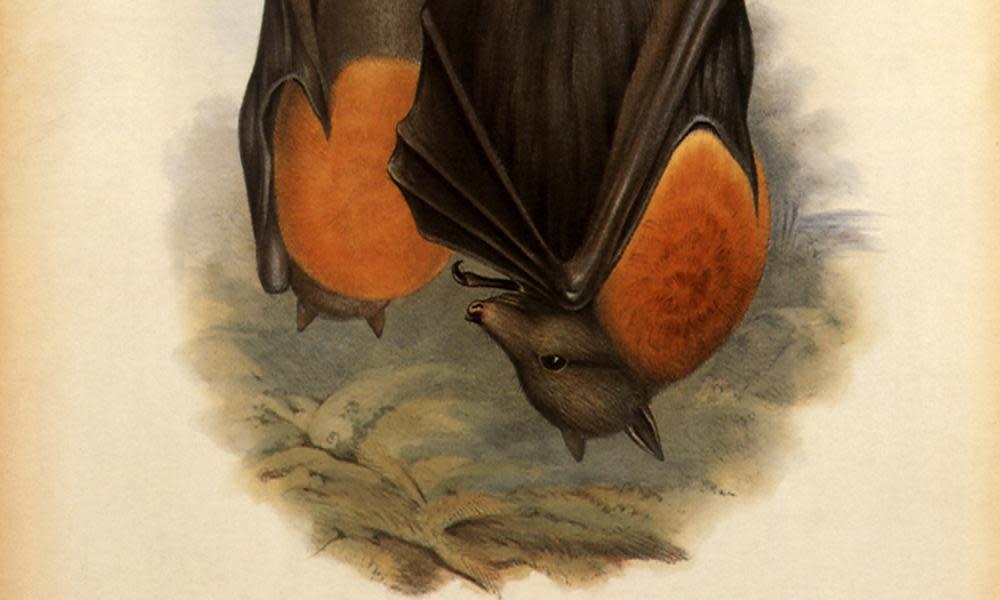A megabat: ‘Why, it’s practically a fox with wings’

Every evening in Sydney, clouds of bats move across the sky. They time their trip so that there is just too little light to make out anything more than a silhouette – which is just enough light so that you can see, very clearly, the outlines of their legs and feet knocking together – an entrechat – as they flap their wings.
I’m not sure that I will ever stop having the exact same thought about this: “Oh my God, you can see their feet knocking together. Oh my God.”
The bats are how you know where you are. Sydney’s trees include a mix of British oaks and pines, Brazilian Jacarandas and many kinds of smaller, green and silver shrubs that, until I moved here, I thought of as distinctive of the western Cape in South Africa. They have proteas here, too – or waratahs. But the bats give the game away. They don’t use echolocation, but in the city, they fly along routes that mirror roads.
Related: A bee: before it dies, its mouth opens and closes, kissing the ground | Helen Sullivan
More precisely, the bats are grey-headed flying foxes, one of the largest bat species: megabats. Once, in 1863, they were named “grey-headed vampires”. In one National Geographic video a single bat, looking head-on at the camera, opens its wings and then its pointy snout, in a way that is distinctly like a vampire saying: “Ta-da”.
The rebranding from bat to fox is bold, but you can imagine the British fauna enthusiast doing their PR: “Why, it’s practically a fox with wings!”
On their sunset trips, they look for water. One of the ways they drink is to skim the surface of a river or pond, so that their fur gets wet; they lick up the droplets. They eat fruit, nectar and blossoms. Their faces get covered in pollen: a yellow-headed megabat.
Like Sydney’s vegetation, its vast Centennial Park park still bears the marks of strange colonial fantasies, and seems to keep reproducing new ones. What remains in my mind of a recent walk there is a series of stills – like the images in the piazza scene in A Room with a View, before Lucy is overwhelmed by the heat and violence – of a statue of a woman high up on a column, all of the fingers missing from her hand. Brightly coloured sports cars. A girl struggling to control her horse.
Late at night, the bats arrive at the giant native fig tree outside my apartment. I listen to the particular rustle as the force of their landing pulls the leafy branches down and the reverse swish as the branches rebound.
I used to believe they were home at last, wings closing to rest. But in fact, they return to another camp before dawn. Now, instead, I imagine the tree inverted and the bats right-way up, dancing with practiced restraint and their mouths full of fruit.
• “The Nature of … ” is a column by Helen Sullivan dedicated to interesting animals, insects, plants and natural phenomena. Is there an intriguing creature or particularly lively plant you think would delight our readers? Let us know on Twitter @helenrsullivan or via email: helen.sullivan@theguardian.com

 Yahoo News
Yahoo News 
